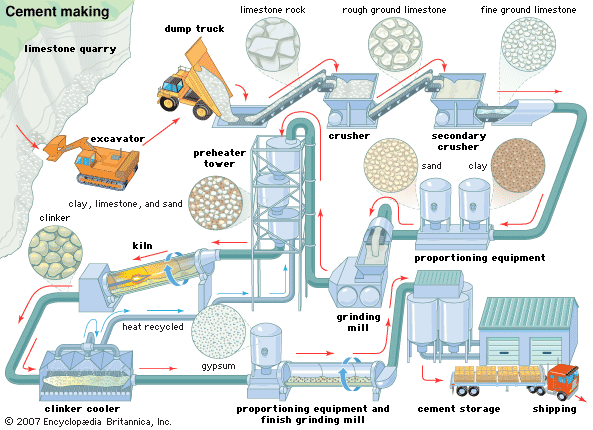
News Date:2017-07-11 11:25:18
Chaeng new type dry process cement production line is mainly used for small, medium and large-scale cement production line. Its preheater employs outside rotary kiln precalciner. Capable of utilizing the waste heat from kiln inlet to decompose raw meal, this line is good at saving electricity and heat. Its closed production line makes it possible to reduce its ambient dust pollution to less than 50mg/Nm3. Besides, its capacity to make use waste heat makes it quite cost efficient for users.
CHAENG can offer one-stop service to you, including designing, building, suitable equipment providing, installing and debugging, technical serving, and overall contracting. And we have successfully finished the construction of 300-5000t/d cement plants
Production Flow of New Type Dry Process Cement Production Line:

1. Crushing and Pre-homogenizing:
Most of the raw materials, like limestone, clay, iron ores, and coal, should be crushed before their pre-homogenization. Limestone is the primary material in this line, and due to its large particle size and high hardness, its good crushing plays an important role in the whole line. Special stacking and reclaiming technology has been used in the pre-homogenizing process so that raw materials can be better primarily homogenized.
2. Raw Meal Preparing:
Since the raw meal grinding work takes up more than 30% labor force in the whole dry process cement production line, it is quite important to choose appropriate grinding equipment and technological process so that high-quality products can be obtained.
3. Raw Meal Homogenizing:
The raw meal homogenization is a key factor for stable clinker calcination.
4. Preheating and Decomposing:
The preheater is used to preheat as well as decompose raw meal. So the length of the rotary kiln is effectively shortened. And the raw meal can fully exchange heat with the hot gases from the kiln. Because of its rapid and high-efficiency heat transfer, the production efficiency and heat consumption of this production line are greatly improved.
5. Clinker Calcining:
After its preheating and pre-decomposing, the raw meal will be calcined in the rotary kiln, where the generated carbonate will be further decomposed. Meanwhile, a series of solid phase reactions will take place.
6. Cement Grinding:
As the last process, the cement grinding will consume a great deal of electricity. And in this process, special size granule cement will be obtained.
7. Cement Packaging:
The cement is then housed in storage silos, from where it is hydraulically or mechanically extracted and transported to facilities where it will be packaged in sacks or supplied in bulk. In either case, it can be shipped by rail car, freighter truck or ship